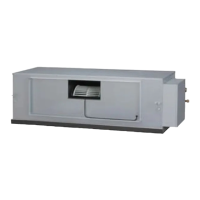
Do you have a question about the Fujitsu GENERAL AIRSTAGE AAUA48TLAV and is the answer not in the manual?
| Brand | Fujitsu |
|---|---|
| Model | GENERAL AIRSTAGE AAUA48TLAV |
| Category | Air Conditioner |
| Language | English |
Essential safety guidelines for installers before commencing installation work.
Key safety considerations for wiring, transporting, installation locations, and refrigerant handling.
Safety warnings and precautions when handling R410A refrigerant, including leak risks and toxicity.
Details on dedicated tools and piping materials required for R410A refrigerant installations.
Lists and describes the furnished installation parts and accessories provided with the unit.
Lists available optional parts that can be added to the system.
Clarifies that Fujitsu General products use metric units, with US customary provided for reference.
Guidelines for choosing a suitable location for the indoor unit, considering safety and environmental factors.
Specifies required clearance dimensions for top, bottom, and maintenance access during unit installation.
Procedures and safety precautions for physically mounting and installing the indoor unit.
Instructions for handling and moving the unit during installation.
Guidance on how to install the hangers for suspending the indoor unit.
Steps to ensure the unit is installed level, crucial for drain functionality.
Instructions for attaching ducts to the unit, including considerations for grilles and air filters.
Guidance on choosing appropriate copper pipe materials and dimensions for R410A systems.
Specifications for piping, including insulation, length, and elevation based on installation conditions.
Covers flaring, bending, and general connection procedures for refrigerant pipes.
Detailed steps for flaring pipe connections specific to the 48 type model.
Specific instructions for brazing pipe connections for the 72 type model, including brazing techniques.
Instructions for applying heat insulation to pipes for the 48 type model after leak checks.
Instructions for applying heat insulation to pipes for the 72 type model after brazing.
Guidelines for positioning drain pipes, including downward gradient and heat insulation.
Procedures for connecting drain hoses to main and safety ports, including trap installation.
Specifies voltage ratings, operating range, and breaker requirements for safe electrical installation.
Provides detailed instructions on connecting power, transmission, and remote controller cables correctly.
General guidelines for connecting cables to the unit's terminal blocks.
Specific instructions for attaching the power supply cable, including length adjustment and wiring types.
Details on wiring transmission and remote controller cables, including shielded and non-shielded types.
Steps for connecting all cables to the control box and securing them.
How to use external inputs for operation control, emergency stop, and fan speed control.
Options for selecting apply voltage terminals or dry contact terminals for external input.
Configuration for external outputs to indicate unit status like operation, error, or fan status.
Information on the installation and connection of an optional IR receiver unit.
Manual and automatic methods for setting indoor unit and refrigerant circuit addresses using DIP switches or remote controller.
Configuration of addresses for wired and wireless remote controllers for system control.
Adjusting the timing for filter cleaning notifications.
Enabling or disabling filter indicator and setting display options.
Setting static pressure modes for different fan speed adjustments based on unit model.
Enabling or disabling automatic system restart after a power outage.
Restraining cold airflow during heating operation for ventilation.
Selecting operation modes for humidifier control.
Adjusting temperature thresholds to control automatic switching between cooling and heating modes.
Procedure for conducting a test run using the outdoor unit's control board.
Instructions for performing a test run of the air conditioner using the remote controller.
A comprehensive list of checks to perform after installing the indoor unit for proper operation.
Status of the green power indicator lamp, indicating normal power or communication faults.
Table detailing error codes displayed on the remote controller and corresponding error contents.

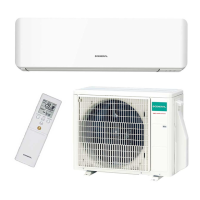
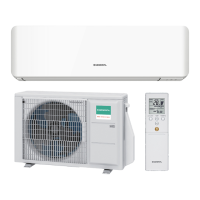


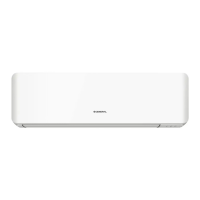


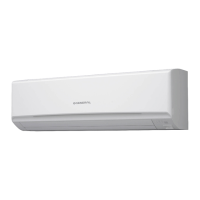

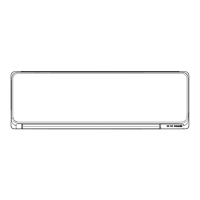

